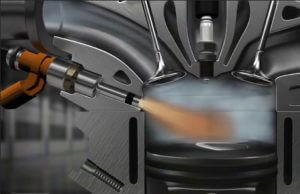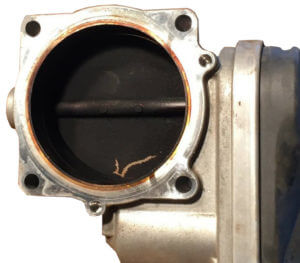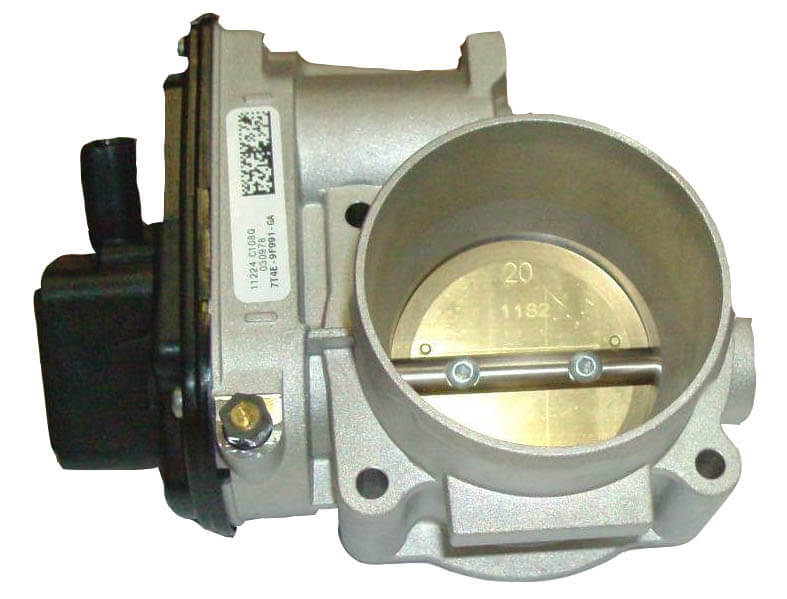Why the shop recommends fuel induction service
What is fuel induction service and do you need it?
Fuel induction service is a cleaning procedure to remove carbon buildup from your engine’s throttle body and intake valves. The service can solve some performance related issues if they’re caused by carbon buildup. Most engines develop some carbon buildup on the bore of the throttle body. As the buildup accumulates, it can affect idle quality.
However, carbon buildup on the intake valves is a more serious problem and happens mostly on engines with gasoline direct injection (DI). DI differs quite a bit from port injection and is far more prone to intake valve carbon buildup problems. Read on for more information on when and how to clean off this carbon buildup.
Why is intake valve carbon buildup such a problem with direct injection engines?
In a port injected engine, the fuel is injected onto the backside of intake valves. That fuel cleaner additives keeps them clean. But on direct injected engines the fuel is injected directly into the cylinder, so the intake valves never get cleaned. During engine operation the valves are exposed to recirculated blowby from the PCV valve. That causes soot, acids and oil vapor to deposit on the backside of intake valves, and that’s why it’s such a problem on DI engines.
Carbon buildup also happens after engine shutdown. Any remaining crankcase vapors rise to the top of the engine and deposit on by the intake valves the the throttle body.

In a GDI system, the fuel sprays directly into the cylinder
How fuel induction service is done
The technician removes a vacuum line from your engine and attaches a dispensing device that meters the flow of a special cleaner into the engine intake. The technician then starts the engine and opens the flow of the cleaner while increasing idle speed. The cleaner comes into direct contact with the intake valves and begins to dissolve the buildup. After injection, the technician lets the car sit for a few hours to allow the cleaner to do its job. Then they take the vehicle for a test drive to blow out any remaining carbon buildup. This service typically runs between $150 and $225, depending on the shop’s labor rate
If the carbon buildup is too severe to be removed by this method, they have to remove the cylinder head and blast off the carbon using ground up walnut shells.
Can you perform your own induction cleaning?
Yes. I’ve posted articles on MAF sensor cleaning, throttle body cleaning and intake valve cleaning. Find them here:
How to clean an electronic throttle, see this post
How to clean a MAF sensor, see this post
How to clean intake valves, see this post
How often do you need fuel induction service?
When direct injection was first introduced, car makers published multiple service bulletins warning dealers not to perform routine fuel induction cleaning services, and to perform it ONLY to correct a carbon buildup performance issue related issue. In those cases, the induction cleaning service CAN remove carbon buildup and restore performance. But it is NOT recommended as a routine preventative service.
That advice has unfortunately been proved wrong as car makers have gained more experience with DI engine designs. Now, air induction service IS recommended as a preventative measure approximately every 30,000 miles. However, some engines, especially European brands, need it more often.
Symptoms of carbon buildup
• Rough idle or hard starting caused by carbon buildup in the electronic throttle body. Make sure the shop confirms that the carbon buildup is the cause of the rough idle before agreeing to the induction cleaning service.
• Hesitation on acceleration caused by debris accumulation on the MAF sensor elements.
• Rough idle and lack of power caused by carbon buildup on the back of valves in DI engines.
Carbon buildup in the throttle body has always been an issue
Cleaning carbon out of the throttle body isn’t a new phenomenon; it has been around since the beginning or port fuel injection. It wasn’t such an issue with carbureted vehicles because the fuel washed the carburetor’s throttle plate.
Like intake valve carbon, throttle body carbon buildup happens after engine shutdown when hot crankcase vapors rise to the top of the engine and deposit on the throttle plate and bore. During a fuel induction service, some technicians inject cleaner into the air intake duct. But the off

Carbon buildup in an electronic throttle body

Cleaned electronic throttle body
In addition to cleaning the throttle body, technicians also clean the Manifold Airflow Sensor (MAF) by spraying the
sensing elements with MAF sensor cleaner.
Don’t get scammed by shops suggesting the service more often than needed
The current recommendation for fuel induction service is every 25,000 to 30,000 miles. You certainly wouldn’t know that going by how often shop recommend the service. They’ll suggest it at every oil change. You don’t need it that often.
In my opinion, every 25,ooo miles is plenty. The only exceptions are VW and Audi engines; those need it more oftne
©, 2018 Rick Muscoplat
Posted on by Rick Muscoplat